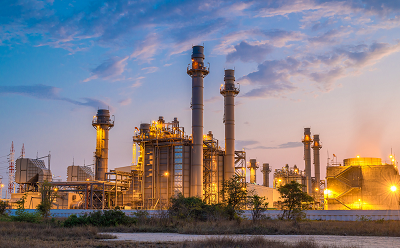Modi government has been taking various measures to protect Indian consumers from international oil and gas price volatility. Despite a staggering increase of 228% in international gas prices between January 2021 and February 2023, increase in CNG prices in India have been restricted to 83%– only about a third of the global increase. Politically motivated naysayers, in their haste to criticise rising prices, fail to see how well India has done to shield its citizens from extreme price volatility in comparison to other major economies.
Farsighted governance through proactive measures such as increasing domestic Administered Price Mechanism (APM) gas allocation and diverting gas from non-priority sectors to transport and domestic segments has made this possible. The recent Cabinet decision to approve a series of critical APM gas pricing reforms will further advance this objective. These reforms achieve two major goals – first, to protect Indians from extreme price volatility and to provide clarity for planned capex investments in gas-based sectors; and second, to promote more innovation and investments in Exploration and Production (E&P).
The need for this set of rationalisation and reforms (R&R) arose from the limitations of the New Domestic Gas Pricing Guidelines, 2014, which, until recently, determined APM prices based on the volume-weighted average price of gas at four international hubs. The transmission of these prices came with a significant time lag (6-9 months) and contained high volatility even as two producer countries’ gas hub prices had lost their relevance in the last few years.
For instance, the APM price between October 2020 and September 2021 remained $1.79/MMBTU, much below the marginal cost of production of $3.5/MMBTU for nomination fields. During this period, LNG prices in west India averaged about $11/MMBTU. In essence, domestic production fetched a price less than 20% of the LNG prices. However, the same APM prices jumped from $1.79/MMBTU in September 2021 to $8.57/MMBTU in October 2022 due to a 400% price surge in international hub prices after the Russia-Ukraine crisis, bringing tremendous distress to the fertiliser, power and City Gas Distribution (CGD) sectors.
The government decided to insulate domestic gas consumers as well as national oil companies from such volatility by benchmarking APM prices to a slope of 10% of Indian Crude basket price to be determined on a monthly basis, together with a ceiling of $6.5/MMBTU and floor of $4.5/MMBTU for nomination fields. The ceiling has been determined at 10% of the last 20 years of Indian crude price (about $65/BBL) while the determination of the floor price considers the marginal cost of production of about $3.5/MMBTU for gas production from nomination fields.
The slope of most of the Indian long-term LNG contracts has hovered around 13% above Brent. Accounting for the costs of liquefaction, transportation and regasification in LNG contracts, the slope for domestic gas has been pegged at 10% for the APM prices.
After these reforms, the average cost of cooking fuel for households (PNG) has been reduced by about 10% and CNG vehicle owners have seen a 6-7% reduction in prices. Another crucial advantage will be the reduction in fertiliser subsidies, expected to be more than Rs. 2000 crores each year.
These reforms will also help incentivise investment in the E&P sector by providing a floor price for mature fields of nomination while also incentivising new wells of nomination fields which will receive 20% higher prices. The ceiling on production from ONGC and OIL will remain the same for the first two years and then increase by $0.25/MMBTU every year, to adjust for any cost inflation. The reforms will not impact private operators of New Exploration Licensing Policy (NELP) fields or High Pressure, High Temperature (HP-HT) fields that have a ceiling price or new gas production from field development plans submitted after February 2019. They will continue to have marketing and pricing freedom.
The Cabinet’s decisions have received a thumping response from the markets and experts alike. Some commentators, however, have raised concerns regarding these reforms in an Op-ed in this newspaper. Their article states that domestic consumers would have benefitted from the recent decrease in the US-based Henry Hub prices and Russian gas prices had the reforms not been implemented. It forgets to mention that there were four hubs in the 2014 formula, and the prices of one hub, i.e., the British-based virtual trading zone National Balancing Point (NBP) are still in the range of $12/MMBTU. Further, current prices would have impacted APM prices only in the next pricing cycle of Oct 2023-March 2024. The recent change in formula ensures that the benefit to the consumers is passed on without a time lag as price will now be determined on a monthly basis rather than half-yearly.
The aforementioned article highlights that current high well head prices for domestic gas ensure a continued high price for LNG exports to India except for Qatar LNG. Domestic gas prices have nothing to do with the long-term LNG contracts or even spot purchases of LNG. Concerns had also been raised regarding stranded gas power plants. During the last half-yearly price of $8.57/MMBTU, some power plants had stopped off-taking contracted gas, leading to issues of take or pay obligations under Gas Sale and Purchase Agreements (GSPA). With the new ceiling of $6.5/MMBTU, gas power plants will now get much-needed relief.
To promote gas production from difficult areas (Deepwater, Ultra Deepwater and HP-HT fields), the government in March 2016 had notified that HTHP ceiling prices be pegged to imported alternative fuels such as LNG and landed price of imported Fuel Oil. Before this government, production from these fields was not considered viable. Today, production from difficult areas has reached about 20% of the overall domestic gas production, and is expected to reach 30% within the next few years. Considering the nature, complexity and viability of production from these areas, their formula has not been tweaked.
India is aggressively expanding infrastructure for oil and gas operations and executing policy reforms to balance the interests of both consumers and producers. Since 2014, India has increased the length of its gas pipeline network from 14,700 kms to 22,000 kms in 2023. The number of domestic connections has increased from 22.28 lakh in 2014 to over 1.03 crore in 2023. The number of CGD-covered districts in India has increased from 66 in 2014 to 630 in 2023 while CNG stations have gone up from 938 in 2014 to 5,283 in 2023. India’s LNG terminal regasification capacity has increased from 21.7 MMTPA in 2014 to 42.7 MMTPA in 2023, with another 20 MMTPA capacity under construction.
With a growing demand for natural gas, India is well on its way to realising a gas-based economy as part of its broader energy transition goals. The vision of a cleaner, greener and sustainable energy future for India is steadily becoming a reality.
(The Author is Union Minister of Petroleum and Natural Gas, and Housing and Urban Affairs in the Government of India)









